Halmstad University
Solar
Team
Halmstad University Solar Team is a student driven, non-profit organisation operating from the city of Halmstad, Sweden. We are working toward a sustainable future for the automotive industry and in doing so, developing a solar driven racing car to participate in Bridgestone World Solar Challenge. There we will, along with students representing 35 different nations from across the globe, compete in who has developed the most effective solar powered car, in a race that spans 3000 km through the Australian countryside from Darwin to Adelaide.
Our vision is to win the Bridgestone World Solar Challenge. HUST will do this through creativity, innovation and an extreme dedication.
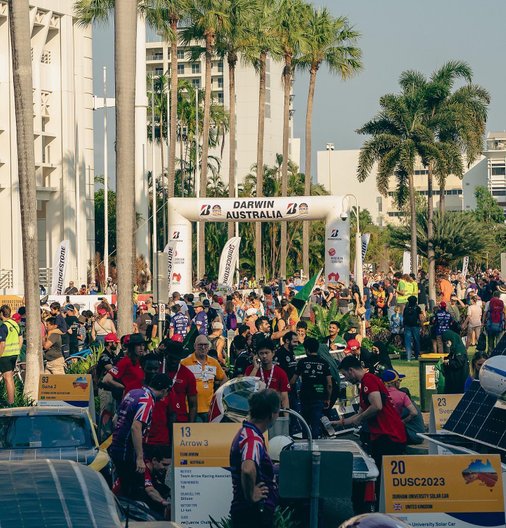
Sunday 22/10 – Starting line
Everything was packed into the cars in the early morning for the trip to Adelaide. At 7 am every team gathered outside Northern Territory Parliament House and the Supreme Court to prepare the cars for the race and then start according to starting order (which were decided via “hotlap” the day before, scrutineering day 21/10). The first team left at 8 am whilst Sven left at 8.35 am. From our starting point out to Stuart highway we had 3000 km ahead of us. It should be appointed that no streets were closed and drove in normal daytime traffic while the race happened. The solar car was however placed between a lead car and a chase car so that there was communication with the driver on what is happening.
First day of the race:
The start line was at Darwin, initially the stretch led through Darwin's city center necessitating that the solar cars navigate urban traffic. Sven reached Control Stop 1: Kathrine (322 km) successfully and everything proceeded as planned. By 5 pm we concluded our day's journey in accordance with the competition rules, covering the distance of 433 kilometers. There we made a pit stop for the night in a roadside parking area. It was noticed that more energy was consumed than initially anticipated. That prompted the development new strategies and planning adjustments to better address the conditions anticipated for the following day.
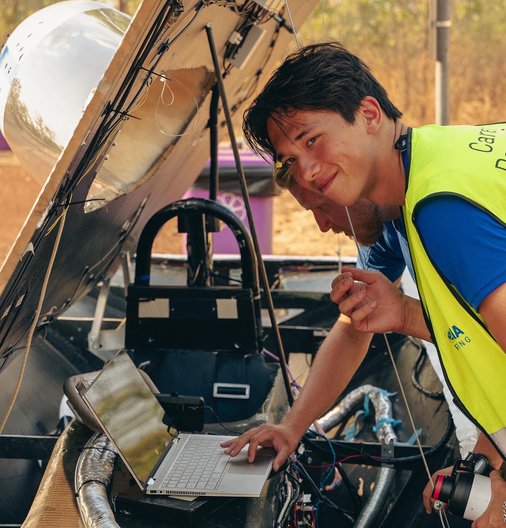

Monday 23/10 - Second Day
The solar car was placed to receive more sunlight as possible for charging. At first it all seemed to be going well although later we discovered that we might have left the camp too early. A few miles down the road we encountered high trees that casted shadows that made it difficult for Sven to gather sunlight. Although this situation may have happened it only gave us a valuable lesson for us to take along the rest of the race.
We kept going and reached the control stop in Dunmarra at the 633 km, it was found very necessary to make intermittent stops along the route allowing the solar car to be recharged. The adventure of the day reached its end as we rolled into Elliot, driven at 733 km.
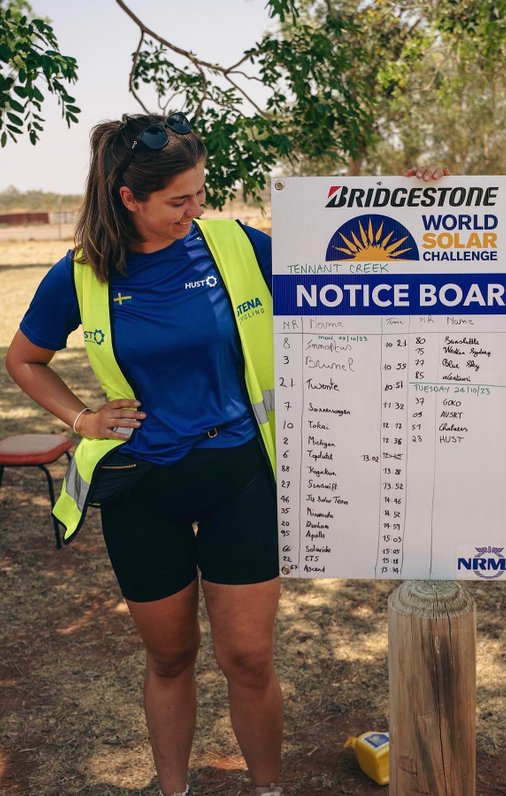
Tuesday 24/10 - Third Day
The team set out for Control Stop 3: Tennant Creek (987 km). The energy consumption exceeded expectations that day and the weather conditions were less that optimal. Despite the obstacles, the team managed to arrive at the control stop in the nick of time ensuring our continued participation in the competition. A control stop operates within specified time windows, meaning that missing one would result in the termination of the journey in the competition. The procedure at a control stop involves exiting the solar car, along with any ballast, and then racing to press a button to record the time. Following this, no one is allowed to touch the car for 25 minutes. After 25 minutes, the driver can prepare with any necessary ballast and set off after 30 minutes.
It was realized at this point that it would be challenging to make it to the next stop due to our car's higher energy consumption compared to energy generation. That was the reason we made the tough call to trailer Sven at around 1070 km. It's important to note nothing went wrong, the car was stable, maintained excellent temperatures for its electrical components, and all mechanical structures were sound. However, due to our energy consumption issues, the team made the difficult call to conclude our journey in the Challenger class.

Wednesday 25/10 - Fourth Day
After spending the night in Alice Springs, the fourth day started! Despite our official time coming to halt, we had the opportunity to continue driving the registered vehicle. This meant that, despite the challenging decision to trailer Sven, we still had the team's overarching goal in mind: to gather as much data as possible, both for our current team and to better navigate the rigors of future competitions.
We chose to trail for an entire day to catch up in terms of time and distance. We drove to Coober Pedy where we met our friends jusolarteam to set up a camp for the night. The car was recharged later in the evening, setting the stage for the following day to collect more valuable data. We were very proud and happy to have come this far, and glad that we still had the opportunity to drive and collect more kilometers.
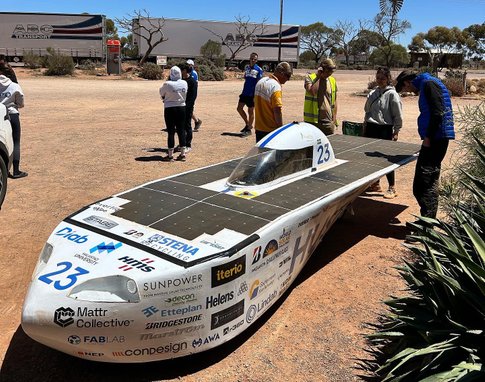
Thursday 26/10 - Fifth Day
We left Coober Pedy (2178 km) early in the morning. The day started with a fully charged battery from the previous day, enabling us to test the capabilities of the car's speed and maintain an increased average speed of approximately 75-80 km/h. The strong crosswinds that the weather had planned for us further contributed to our data collection and strategy development compared to previous stages. Next control stop was in Glendambo (2432 km) where we took a lunch break before the last drive down to Port Augusta (2716 km).
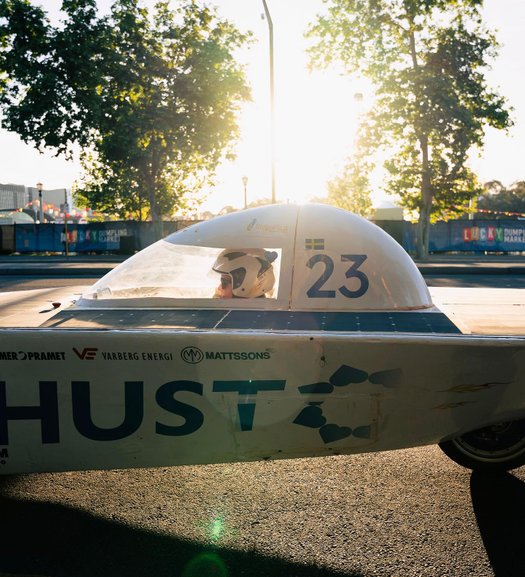
Friday 27/10 - Sixth Day
Sven drove from Port Augusta (2716 km) in the morning. The weather contributed with even more challenges, so we decided to trail the last stretch to Adelaide city which is the last stop of the race and also the finish line. The competition had arranged a large parking area against Torrens Parade Ground for all solar car teams, where cars, trucks, and trailers were parked for the upcoming days. This is where we had the opportunity to repack, organize, and prepare Sven for shipping back to Sweden.
After the finishing line, the car was set up for a “exhibit” over the weekend, inside of a big tent for display from the 28thto the 29thof October. Afterwards the attention shifted to the fountain at Victoria Square, where a traditional bath was taken to celebrate our journey.